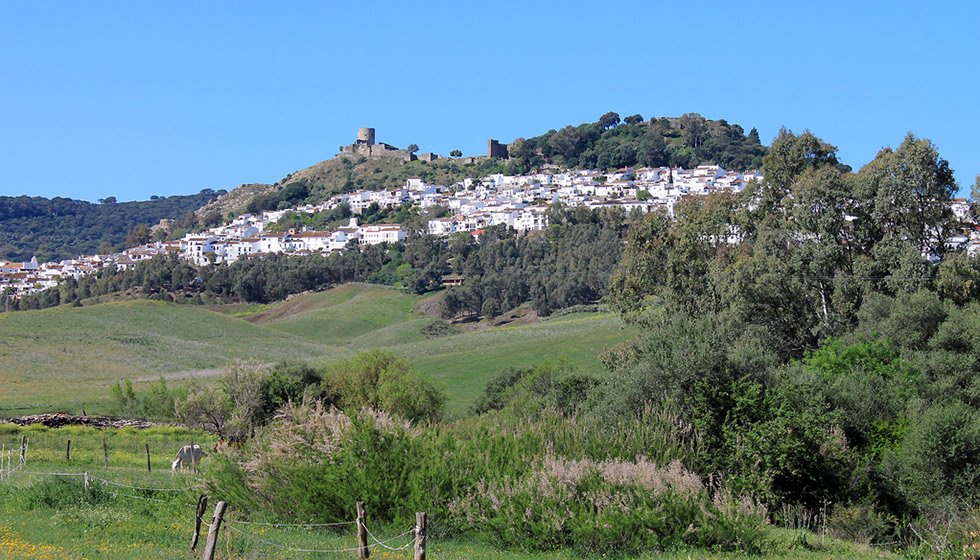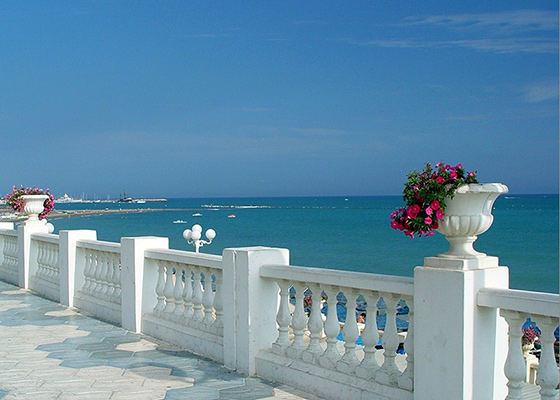






Spectacular mountains rise up immediately behind the coastline, the scenery is stunning, a wonderful backdrop to picture-postcard white villages.

The Costa del Sol is not what most people would imagine as “rural Andalucia”. It’s certainly true that what was once nothing more than a few quiet fishing settlements has been completely transformed during the latter part of the 20th century into a tourist destination of world renown – and some would say, infamy!
Once dubbed the “Costa del Crime” due to the trend for British gangsters to escape from legal trouble at home by moving here to live their lives in luxury, there is actually a lot to commend it, particularly on the stretch of coast which runs south from Marbella to the Rock of Gibraltar.
Immediately inland from the coast, spectacular mountains rise up and it’s another world – in atmosphere, beauty and unpredictability. All around the scenery is beautiful, providing a wonderful backdrop to picture postcard white villages.
Casares, a classic pueblo blanco clambers up a spectacular rocky outcrop just nine miles inland from the hustle and bustle of the Costa del Sol.

Take Casares for example, a classic pueblo blanco which clambers up a spectacular rocky outcrop, just nine miles inland from the hustle and bustle of the Costa del Sol.
The dramatic scenery of the rugged Bermeja mountains are home to a colony of Griffon vultures. These majestic birds, with a wing span of two metres, glide on the thermals high above countryside of deep gorges and pine forested ridges. The Sierra Crestellina Nature Reserve lies alongside the village, a popular destination for birdwatchers and walkers.
There are many other pretty towns and villages to explore: Istán, an ancient Arab village tucked away beneath the Sierra Blanca at the head of the valley of the Rio Verde; Jimena de la Frontera, another gem, its steep cobbled streets leading up to the ruins of its castle high above. The old village of Castellar de la Frontera is located entirely within the walls of a 13th century Moorish castle and is totally unique, as bizarre a place as you will ever come across!
The fabulous Los Alcornocales Natural Park is a paradise for walkers, riders, bird watchers, nature lovers and anyone looking for calm and relaxation.
All around, the countryside is marvellous. Los Alcornocales Natural Park (which translates as “the cork oak groves”) spans the provinces of both Cádiz and Málaga. A vast expanse of rolling hillsides and deep dales, it is one of the most extensive forests of cork oak in the world.
Even more dramatic, the Sierra de las Nieves Natural Park, located in the hills behind Marbella, is a foreboding area of mountains which has seen little human influence or activity ever, and has a fabulous variety of flora and fauna as well as one of Europe’s most extensive regions of caves, potholes and underground caverns. As the name suggests, it can be snow-covered in the winter.
Stunning scenery and a genuine rural ambience, yet just minutes away from from the coast!
Another of the attractions of this part of the Costa is that there are still plenty of quiet sandy coves – with perhaps just one little beach bar cooking up some freshly caught sardines – as well as the more sophisticated hotspots for which this part of Spain is so renown.
First and foremost there’s Marbella, Spain’s answer to St Tropez, a place for jet-setters and film stars, a glitzy playground for the rich and famous.
But, for all its carefully cultivated image, it’s really much more down-to-earth than that, a town with genuine Spanish character and individuality, a seaside resort par excellence with a lot going for it.

Fun, sun, restaurants, hot spots galore … and quiet, sandy coves with perhaps just one little beach bar cooking up some freshly caught sardines.

Marbella has a marvellous micro-climate, many claim it’s the best of all, and a coastline to match, some 26 kilometres of sunny beaches bathed by the Mediterranean Sea.
There’s something to suit everyone here, with restaurants galore, live music, theatre and shows, casinos and clubs, not to mention just about every sporting activity under the sun. Check out the lovely old part of town, El Casco Antiguo, too, with its labyrinth of traditional buildings, small shops, art galleries and pretty squares.
And then there’s the ultimate in coastal charisma, Puerto Banús, just west of the town. This is the place to be “seen”, yachtside of course … The rest of us can happily watch this world go by or indulge in a little window shopping at one of the fashion houses or boutiques. Needless to say, nightlife is buzzing here with alfresco bars, piano clubs and discos which are open from dusk until dawn.
Just 14 kilometres away, the twinkling street lights of Ceuta and Tangiers are clearly visible under the dramatic folds of the Rif Mountains.

With the sea on one side and the Sierra Bermeja mountains on the other, Estepona is another popular, year-round holiday destination. But there is still plenty of evidence of its fishing village past: picturesque squares, traditional buildings and unpretentious tapas bars.
Further south we reach the very foot of Spain, the bustling port of Algerciras and that rocky outpost of the British Empire, Gibraltar. Beyond lies Tarifa, the European capital of all things windsurfing, and the wonderful white beaches of the Costa de la Luz on the Atlantic coast.
Inland, bull and horse breeding farms are set among peaceful, rolling hills and soft valleys. For birdwatchers the Bay of Gibraltar is a jewel, being on the main migration route between the two continents. If that’s not your thing, maybe a bit of whale watching instead?
And there’s Africa! It’s so close, across the Straits, that you feel you can reach out and touch it. Just 14 kilometres away, the twinkling street lights of towns such as Ceuta and Tangiers are clearly visible under the dramatic folds of the Rif Mountains.
Fantastic countryside, quiet rural ways, the thrills and spills of beach resorts, some of the best seafood in the world - and 300 days of sunshine every year.
One of the advantages of staying here is that it’s easy to take a day or two off from European life and cross over to Morocco. It’s only a short trip on one of the regular ferries and it will take you to a very different world. Morocco is a big country with much to explore, but for starters, a couple of days wandering around the souks, medinas and mosques of Tangiers will give you an insight into the Muslim world. The boat trip is fun in itself, with shoals of whales and dolphins playing in the waters alongside.
And, just on the off chance that you can’t live without fish and chips, a Sunday newspaper or a packet of wine gums, Gibraltar is worth a visit. A rather strange anachronism in today’s modern world, there is of course plenty of history there too.
A little further afield, the mountain ranges and natural parks which surround Ronda and Grazalema are within striking distance. The capital of the province, Cádiz itself, still evokes the romance and mystery of centuries of trade (some legal, some not so) between Europe and Africa.
There’s so much to do and see in this little corner of Spain, the land of sardines and sweet wine! Fantastic countryside, quiet rural ways, the thrills and spills of beach resorts, some of the best seafood in the world – and 300 days of sunshine every year.
Oh, and there’s plenty of golf too …


















Check out our latest special offers and last minute deals on holidays in Andalucía
